Delicious Penne Pasta: 11 Essential Ways This Classic Shape Wins Every Time
Meta description: Penne pasta is one of Italy’s most versatile pasta shapes. Discover penne’s history, types, cooking methods, pairings, recipes, nutrition, and more in this complete guide.
Permalink: https://pastaloverz.com/penne-pasta-guide
Table of Contents
Introduction: What Makes Penne Pasta Special
The Origins and History of Penne
Types of Penne: Rigate, Lisce, Mezze, and More
Cooking Penne to Perfection
The Best Sauces and Pairings for Penne
Classic Recipes with Penne
Penne in Modern Cooking Trends
Nutritional Profile and Health Variations
Choosing High-Quality Penne
Storing Penne and Handling Leftovers
Internal Resources on PastaLoverz
External Resources and Competitor Guides
FAQs on Penne Pasta
Final Thoughts and Call to Action

Pasta, Penne, Pastry image
1. Introduction: What Makes Penne Pasta Special
Penne pasta stands out as one of the world’s most adaptable pasta shapes. Recognizable for its short cylindrical form and diagonal ends, penne traps sauce both inside and out. This makes every bite flavorful and satisfying.
Beloved in Italy and worldwide, penne is used in a wide range of dishes, from creamy pasta to baked casseroles. Whether you are preparing a family meal or a sophisticated dinner, penne offers structure, versatility, and tradition.
2. The Origins and History of Penne
The story of penne pasta dates back to 1865 in Genoa, Italy, when pasta maker Giovanni Battista Capurro patented a machine to cut tubes of pasta at an angle. The innovation created the now-iconic “quill” shape — penna in Italian means “quill” or “pen.”
Since then, penne has become a staple across Italy and beyond, praised for its ability to carry thick sauces, withstand baking, and retain flavor. From traditional kitchens to modern restaurants, penne has solidified its position as a timeless favorite.
3. Types of Penne: Rigate, Lisce, Mezze, and More
Not all penne is the same. Here are the main variations you’ll find:
Penne Rigate
Ridged exterior. This is best for thick or chunky sauces, as the grooves help the sauce cling tightly to the surface.
Penne Lisce
Smooth and sleek. Ideal for lighter dressings, oil-based sauces, or delicate flavors.
Mezze Penne
Shorter penne tubes are perfect for pasta salads or dishes where smaller bites are preferred.
Whole-Wheat Penne
Nutty flavor, more fiber, darker color. Popular with health-conscious cooks.
Gluten-Free and Legume-Based Penne
Made from rice, corn, lentils, or chickpeas. It’s great for those with dietary restrictions, although cooking times and textures may vary.
Bronze-Die Penne
The product extrudes through bronze molds for a rougher texture that clings beautifully to sauces.
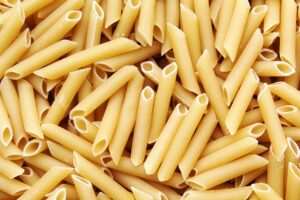
4. Cooking Penne to Perfection
Cooking penne well means paying attention to both timing and finishing:
Use plenty of boiling water.
Add salt generously (the water should taste like the sea).
Stir at the start to prevent sticking.
Cook pasta to taste for al dente texture, usually a minute earlier than the package suggests.
Reserve pasta water before draining.
Finish cooking in the sauce for a deeper flavor.
Never rinse penne after draining; rinsing washes away starch that helps bind sauce.
5. The Best Sauces and Pairings for Penne
Penne is famous for versatility. Pairings include:
Tomato-based sauces, such as classic marinara, arrabbiata, or Bolognese, work beautifully.
Cream-based sauces, such as Penne alla vodka and Alfredo, are timeless crowd-pleasers. (Serious Eats on Vodka Sauce)
Pesto and oil-based sauces: Lighter dressings balance well with smooth penne lisce.
Baked dishes: Penne al forno with cheese, sausage, and vegetables bake perfectly.
Cold salads: Mezze penne holds up well in pasta salads, whether dressed with vinaigrette or mayonnaise.

6. Classic Recipes with Penne
Some dishes have made penne iconic:
Penne alla Vodka — Tomato, cream, vodka, parmesan. A silky, indulgent dish.
Penne al Forno — Baked with mozzarella and meat sauce. Comfort food at its best.
Penne alla Siciliana — Eggplant, tomato, olives, basil. Southern Italian flavors.
Penne Pesto Genovese — Basil, garlic, pine nuts, parmesan, olive oil. Fresh and green.
For a step-by-step recipe, see Delish’s Penne alla Vodka.
7. Penne in Modern Cooking Trends
Beyond tradition, penne has evolved with global food culture:
Vegan and plant-based penne dishes using cashew cream or lentil sauces.
High-protein legume penne for fitness-focused eaters.
Fusion flavors — penne with Asian stir-fry vegetables or spicy Latin sauces.
Its shape and texture make it a natural fit for experimentation.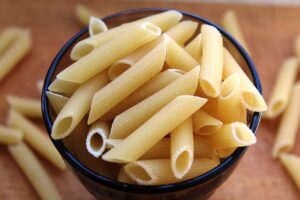
8. Nutritional Profile and Health Variations
A standard 100 g serving of dry semolina penne provides:
| Nutrient | Value |
|---|---|
| Calories | ~350–370 kcal |
| Carbohydrates | 70–75 g |
| Protein | 12–14 g |
| Fat | 1–2 g |
| Fiber | 2–3 g (higher in whole grain) |
Whole-grain penne offers more fiber and micronutrients, while gluten-free versions vary in nutrition based on the base ingredient.
(The Spruce Eats on Pasta Nutrition)
9. Choosing High-Quality Penne
When shopping, look for:
100% durum wheat semolina
Bronze-die cut for better texture
Slow-dried pasta for superior flavor
Minimal additives or enrichments
Premium brands like De Cecco or Barilla consistently perform well in taste tests.
10. Storing Penne and Handling Leftovers
Uncooked penne: Store in airtight containers in a cool, dry place.
Cooked penne: Refrigerate up to 3 days in airtight containers. Reheat with a splash of reserved pasta water or sauce.
Freezing baked dishes: Penne al forno freezes well. Wrap tightly and thaw overnight before reheating.

11. Internal Resources on PastaLoverz
For more pasta insights, explore these articles:
12. External Resources and Competitor Guides
For further reading and competitor comparisons:
13. FAQs on Penne Pasta
Q: Why does my penne pasta get mushy?
Overcooking or insufficient salt in the water. Test early for al dente.
Q: What is better, penne lisce or rigate?
Rigatoni holds thicker sauces, while linguine is best with lighter ones.
Q: Can I substitute penne for spaghetti?
Yes, though the texture changes — penne is chunkier and holds sauce better.
Q: Does whole-wheat penne taste different?
Yes, nuttier and heartier. Adjust the sauce accordingly.
Q: Can penne pasta be used in cold salads?
Absolutely, especially mezze penne for smaller bites.
Q: What is the difference between Penne Lisce and Penne Rigate?
The main difference between Penne Lisce and Penne Rigate lies in their texture. Penne Lisce has a smooth surface, which gives it a delicate feel and makes it ideal for light, creamy sauces that glide over the pasta. Penne Rigate, on the other hand, has ridges along its sides that help sauces cling better, especially thicker or chunkier ones like tomato or meat-based sauces. Both share the same diagonal cut and tubular shape but offer different eating experiences depending on the sauce.
14. Final Thoughts and Call to Action
Penne pasta is more than a shape — it’s a canvas for flavor. From traditional Italian recipes to creative global twists, penne continues to prove its place at the table.
Next time you’re cooking pasta, try penne in a new way. Explore our other pasta guides on Pastaloverz.com and experiment with sauces, bakes, or salads. Share your favorite penne recipe in the comments — let’s keep the love for pasta alive.
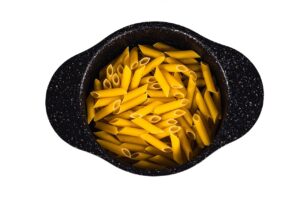
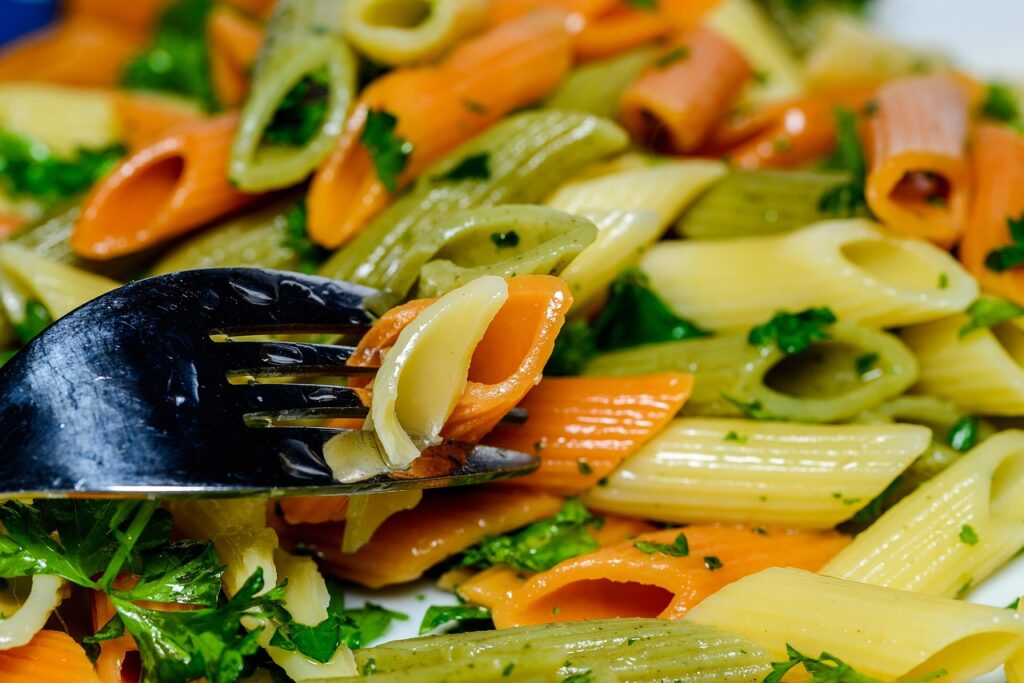
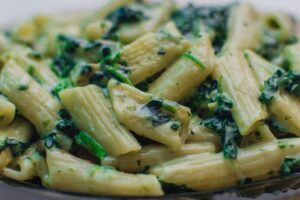
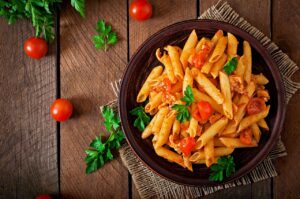
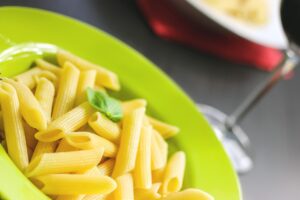
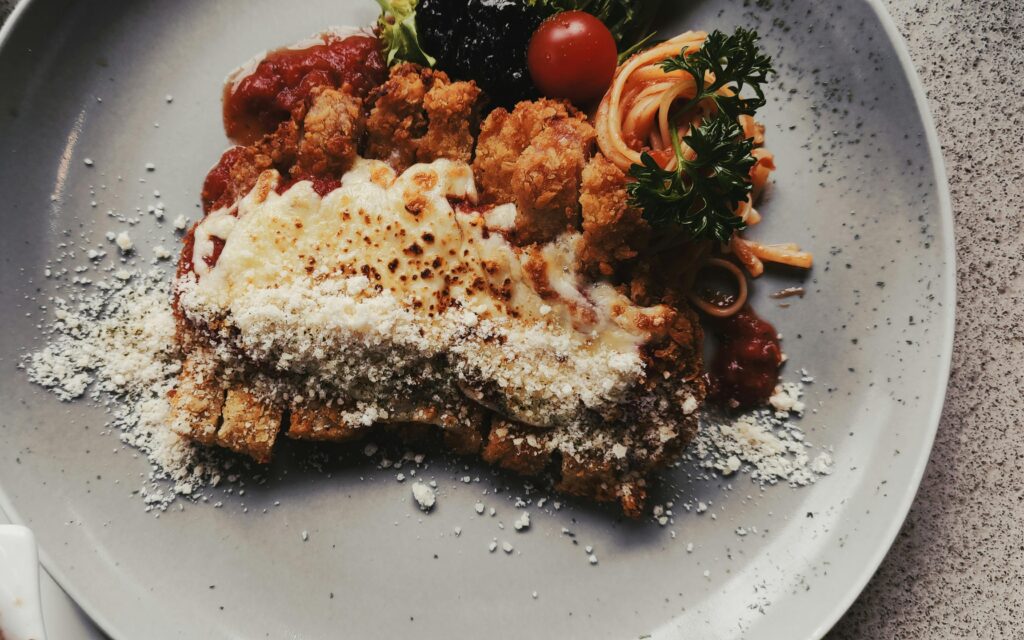
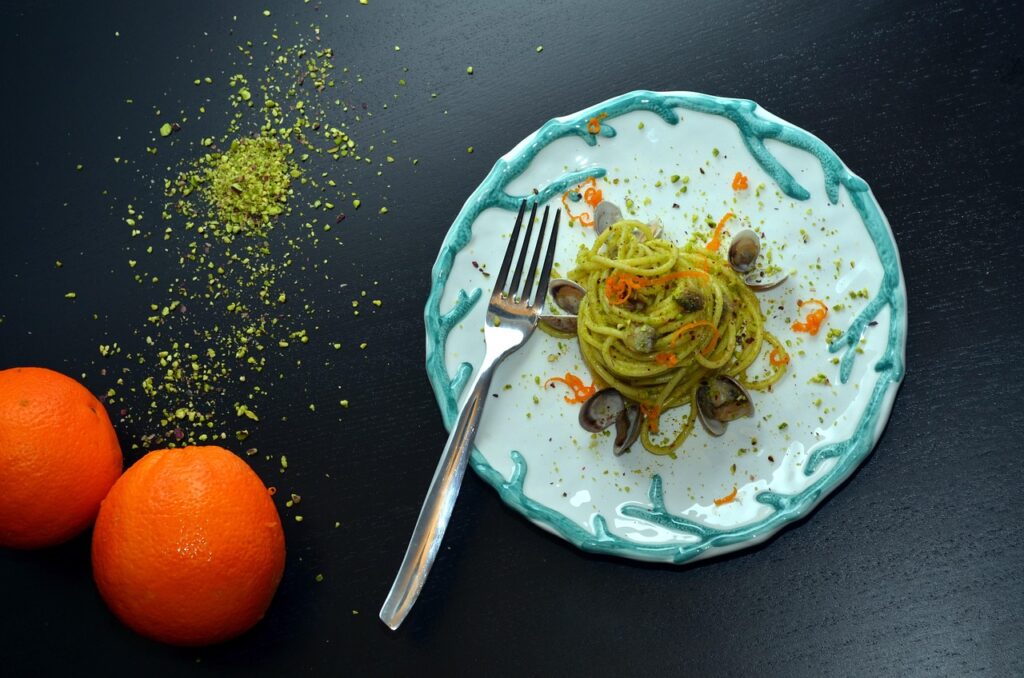
Pingback: 7 Irresistible Reasons Bigoli Will Win Your Heart